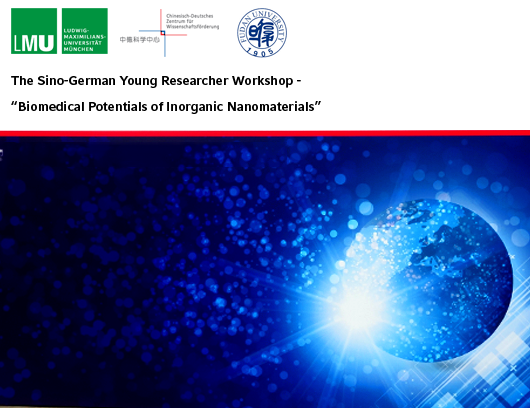Workshop Biomedical Potentials of Inorganic Nanomaterials

This topic belongs to the field of nanotechnology, which examines structures and processes that are 80,000 times smaller than the diameter of a human hair (1 nanometer = 10-9 meter). The importance of the often used term «nano» is based on the fact that our life processes occur at the nanoscale. The most basic unit of all living organisms, the cell, is made up of a number of smaller structures, the organelles; these consist of interacting biomolecules, which perform mechanical and biochemical functions on the nanometer scale. Such molecular «nanomachines» form the basis of all living organisms.
Many disease processes start within specific cell types with a malfunction at the cellular level. Modern science longs to learn about this molecular process in more detail to better understand diseases and to find new therapeutic options. A central topic of research is the development of functional nanoparticles able to interact specifically with cells. The list of requirements for such «nanomachines» is long: They should trace and detect specifically the cells and organs in the body that are involved in the disease process. Once the particles have reached their target, their task is to selectively ignite a strong healing effect; but at the same time they must spare the cells that are not involved. Furthermore, this process should be tracked as accurately as possible by medical diagnosis. Of course the applied nanoparticles need to be completely non-toxic, biodegradable or naturally excreted. Last but not least, the natural immune system of the body must not recognize and eliminate the particles before they have reached their goal. In view of these requirements, it becomes obvious how complex the development of such a «magic weapon» is.
The organizers of the workshop – Dr. Stefan Wuttke from the Department of Chemistry at the LMU and his Chinese colleague Dr. Rongquin Huang from the Department of Pharmacy, Fudan University – invited various scientists from the fields of pharmacy, chemistry, medicine and biophysics. The goal was an academic exchange between young researchers from China and Germany. The manageable size of the workshops with about 35 people facilitated an individual relation between all participants. The guests appreciated the lovingly designed framework program and the attentive service: German participants were met at the airport and everybody lodged in the same hotel with comfortable rooms. On an organized day trip of fourteen hours they were shown the main attractions of Shanghai such as the Transrapid – an example of successful German-Chinese cooperation. And the physical well-being was not neglected either. This hospitality was made possible by the generous support from the Sino-German Center for Research Promotion.
The workshop illustrated impressively the wide current interest in the use of nanoparticles for various biomedical applications. Yet, regrettably one of the main issues had to remain largely unanswered: the interaction of «Nano» with «Bio». This is due to the complexity of the issue as well as to the necessity of costly and time-intensive research. We hope to find answers to these and other questions in two or three years within a German-Chinese workshop at LMU.